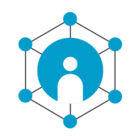We get this question regularly, so I thought I’d put it on here to help people find the info. Certain of our supported 3rd party titles require that the app not be running for patches to be applied. We could terminate the application automatically but doing so would risk data loss. For example, Notepad++ is not set to auto-save by default. If we were to close Notepad++ when we detect it running, in order to patch, an end-user could have unsaved work which would be lost. Because of this, you will see failed patches for Notepad++ anytime the patch schedule coincides with the Notepad++ application being open.
One tip for ensuring that Notepad++ gets patched is to put a reminder in the patch notification text that users should close out of Notepad++ before allowing the patching to proceed.
Here’s the documentation for custom notifications:
https://support.automox.com/help/end-user-notifications
And here’s the list of third party titles that we support, and which ones require the software to not be running:
https://support.automox.com/help/third-party-patching-best-practices

